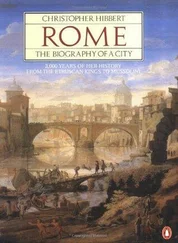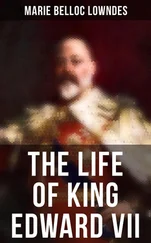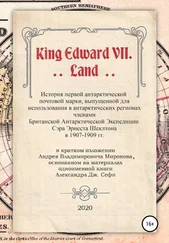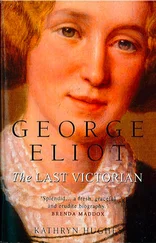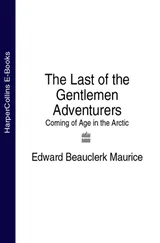Having failed to derive much profit from Rome, he was now sent up to Edinburgh for three months’ intensive work before embarking on the next stage of his education, a period of study first at Oxford, then at Cambridge. He arrived at the Palace of Holyroodhouse in June 1858 with Colonel Bruce and the Revd Charles Tarver, and was required to settle down immediately to a course of lectures on all manner of subjects from chemistry to Roman history. He was allowed little time off from his work, and then not to go shooting with the Duke of Atholl as he wanted, but to make excursions to admire the scenic beauty of the Trossachs and the Scottish lakes, and to give dinners to the local worthies and his various instructors. His time in Edinburgh over, he went up to Oxford in October 1858. He was still not yet eighteen.
The Prince, who would rather have gone straight into the army than to Oxford, had hoped that his father would at least allow him to live in a college. But the Prince Consort had been adamant that he must live in a private house where his activities could continue to be supervised by Robert Bruce, now a major-general, and Major Teesdale. Ideally the Prince Consort would have liked his son not to be attached to any particular college at all. He had only consented to his being admitted to Christ Church when informed by the Vice-Chancellor that such an arrangement was essential, and then on the strict understanding that General Bruce was ‘entirely master of the choice of society which he might encounter’. ‘The more I think of it,’ the Prince Consort wrote to the Dean of Christ Church, ‘the more I see the difficulties of the Prince being thrown together with other young men and having to make his selection of acquaintances when so thrown together with them.’
And so the Prince moved into Frewin Hall, a gloomy house off Cornmarket Street; and there he and six Christ Church undergraduates, selected as his companions, listened to lectures specially composed for his benefit. In the dining-room he attended lessons in English history given by the Regius Professor of Modern History, Goldwin Smith, who was more interested in academic reform than in teaching and seems to have directed the attention of his royal pupil almost exclusively to the tedious pages of W.E. Flaherty’s Annals of England. The Prince, polite but bored, learned little, and Smith felt driven to suggest that he might well have acquired more knowledge of history from reading the novels of Walter Scott.
Occasionally the Prince could be glimpsed in the town, a slight, boyish figure with curly hair and a fresh complexion, wearing the gold-tasselled mortar-board with which all undergraduates of noble birth were then privileged to adorn themselves, walking to a lecture in the Divinity Schools, a service in the Cathedral, or a debate — the quality of which he usually condemned unreservedly — in the Union where, upon his arrival, the assembled undergraduates would immediately rise to their feet. Sometimes he was allowed out hunting or to play racquets or tennis, at which he was a ‘poor hand’. Sometimes he was allowed to attend dinners with such respectable people as Lord and Lady Harcourt at Nuneham Courtenay, or the Bishop of Oxford at Cuddesdon. Often he was obliged to give dinners himself to various senior members of the University interspersed with one or two undergraduates, all of whose names were suggested to him by General Bruce in consultation with the Vice-Chancellor and the Dean of Christ Church. He succeeded in making friends with two extravagant, amusing members of the Bullingdon Club, whose company he found congenial: Sir Frederick Johnstone, already a notorious philanderer, and Henry Chaplin, a clergyman’s son. Chaplin, an exceptionally good-looking young man, had been brought up after his father’s death at Blankney Hall in Cambridgeshire by a rich uncle who had made him his heir, sent him to Harrow, then to Christ Church, and enabled him to keep four hunters. But most of the Prince’s time was allotted to study. ‘The only use of Oxford is that it is a place for study, a refuge from the world and its claims,’ General Bruce was reminded by the Prince Consort, who, possessed by a terrible anxiety that ‘time was being wasted in pleasure’, was — after restless nights of worry — a frequent visitor to Frewin Hall where he complained that recreations, especially hunting, were encroaching too much upon the Prince’s intellectual pursuits.
‘Bertie’s propensity is indescribable laziness,’ the Prince Consort wrote to his daughter in Germany. ‘I never in my life met such a thorough and cunning lazybones … It does grieve me when it is my own son, and when one considers that he might be called upon at any moment to take over the reins of government in a country where the sun never sets.’
As well as being more interested in clothes than in government, the Prince far preferred ‘good food’ to ‘mental effort’. There had been trouble over this particular propensity already. On his fifteenth birthday he had been given permission to choose his own food ‘in accordance with what the physicians say is good for you’. But the experiment had not been a success. Eighteen months later, strict diet sheets had been prepared for him, authorizing three meals a day — a light breakfast of bread and butter, tea, coffee or cocoa and an egg; a luncheon of meat and vegetables with seltzer water to drink and preferably no pudding; a rather more substantial dinner, but still as light as possible. Claret was to be mixed with seltzer water in hot weather, and sherry with tap water in cold. There was to be no coffee after dinner, but at half past nine a cup of tea might be taken or a glass of seltzer water. It was not practicable to keep to this diet at Frewin Hall, but he was urged to be much more moderate. He was already too fat, and if he were not careful his excellent chef would make him fatter. And as well as eating too much he was dressing far too sloppily. He must give up wearing slippers and ‘loose long jackets’ which were ‘so slang’. He was also smoking too much, though his parents did not know this, tobacco being strictly prohibited by General Bruce.
Having so much to condemn and criticize, the Queen and Prince Consort were all the more surprised to learn that their son had done quite well in the first of the examinations which he was required to undergo at the end of each term. The Dean, who thought the Prince ‘the nicest fellow possible, so simple, naïf, ingenuous and modest’, was ‘quite satisfied’ with the results, Princess Frederick William was informed. And her father was thankful to be able to assure her that Bertie, ‘a very good-natured’ boy at heart, had at least done what he had to do ‘very well’.
The Prince Consort received further favourable reports about his son from Germany, where he was sent for part of his Easter holidays in 1860 and where the ageing Baron Stockmar was much impressed by the great improvement he detected in him. ‘That you see so many signs of improvement in the young gentleman is a great joy to us,’ his father replied to Stockmar’s letter of commendation. ‘For parents who watch their son with anxiety, and set their hopes for him high, are in some measure incapable of forming a clear estimate, and are apt at the same time to be impatient if their wishes are not fulfilled.’
In the summer of that year the Prince of Wales was sent out to represent his parents in Canada and on that occasion they acknowledged the compliments paid to him with less grudging satisfaction. It was a long and demanding journey. He left Plymouth in the battleship Nero on 10 July 1860 with a large suite including the Duke of Newcastle, Secretary of State for the Colonies, and General Bruce; and a fortnight later, the first heir apparent to the British throne ever to cross the Atlantic, he landed in Newfoundland, wearing his colonel’s uniform with the ribbon of the Order of the Garter. From St John’s — where he ‘acquitted himself admirably,’ so Bruce reported, ‘and seemed pleased with everything, including himself’ — he travelled to Halifax, then to Quebec, then up the St Lawrence in a steamer to Montreal to drive the last rivet into the new Victoria railway bridge and to open the Industrial Exhibition. From Montreal he went on to Ottawa, where he laid the cornerstone of the Federal Parliament building and rode a timber shoot down the Ottawa River; then on, past Kingston, to Toronto and across Lake Ontario to the Niagara Falls, where he saw Charles Blondin, the French acrobat, walk across the Falls on a tightrope, pushing a man in front of him in a wheelbarrow. Blondin offered to put the Prince into the wheelbarrow for the return journey across the tightrope to the United States. The Prince accepted the offer, but was naturally prevented from going. So Blondin went back by himself, this time on stilts, leaving the Prince to travel on to Hamilton, where he opened the annual Agricultural Exhibition.
Читать дальше


